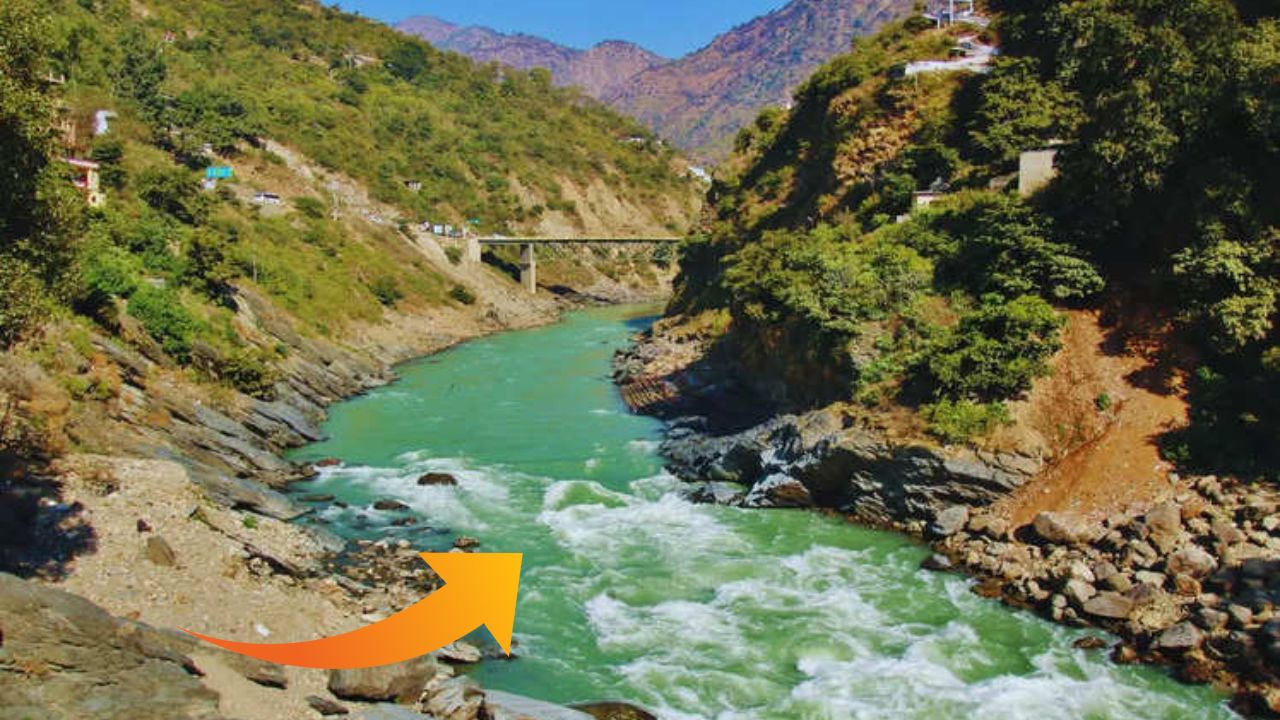India, a land of diverse landscapes and rich cultures, is home to some of the most significant rivers in the world. Among these rivers, the Ganges (Ganga) holds a special place—not just spiritually, but also geographically—as the longest river in India. Flowing majestically through the plains of northern India, the Ganga is more than just a waterway. It is the cradle of ancient civilizations, the lifeblood of agriculture, and a symbol of faith for millions.
In this article, we will explore the journey of the Ganges River—from its source high in the Himalayas to its expansive delta at the Bay of Bengal—highlighting its historical importance, cultural reverence, and ecological significance.
Source of the Ganges
The Ganges originates from the Gangotri Glacier in the state of Uttarakhand, located in the western Himalayas. The glacier gives rise to the Bhagirathi River, which is considered the main stream of the Ganges. This river is joined by another major tributary, the Alaknanda River, at Devprayag—and from this confluence onward, it is known as the Ganga.
At its origin, the Ganga flows through steep mountain valleys, surrounded by breathtaking natural beauty and revered temples. The area is part of the Char Dham pilgrimage, drawing thousands of devotees each year.
The Course of the Ganges
After emerging from the mountains, the Ganga enters the northern plains at Haridwar, where it begins its long and winding journey through the heart of India. The river flows through the states of Uttarakhand, Uttar Pradesh, Bihar, Jharkhand, and West Bengal, covering a distance of about 2,525 kilometers, making it the longest river in India.
Major cities along the river’s course include:
-
Rishikesh and Haridwar – Sacred Hindu pilgrimage centers.
-
Kanpur – An important industrial city.
-
Allahabad (Prayagraj) – The site of the Kumbh Mela, where the Ganga meets the Yamuna and the mythical Saraswati.
-
Varanasi – Considered one of the holiest cities in Hinduism.
-
Patna – The capital of Bihar and a major historical center.
-
Kolkata – The largest city in eastern India, where the Ganga becomes part of the vast Ganges Delta.
The Ganga finally splits into distributaries in West Bengal, with the most prominent being the Hooghly River, which flows through Kolkata. The main stream, called the Padma in Bangladesh, continues its course until it merges with the Brahmaputra River and empties into the Bay of Bengal, forming the Sundarbans Delta—the largest river delta in the world.
Tributaries of the Ganges
The Ganga River system is enriched by several significant tributaries:
-
Yamuna – Originating from the Yamunotri Glacier, it joins the Ganga at Prayagraj.
-
Ghaghara – Originates in Tibet and contributes significantly to the Ganga’s volume.
-
Gandak, Kosi, and Son – These rivers rise from the Himalayas and the central Indian highlands, joining the Ganga in Bihar and Uttar Pradesh.
These tributaries help make the Ganga Basin one of the most fertile and densely populated regions in the world.
Spiritual and Cultural Significance
To millions of Indians, the Ganga is not just a river—it is a goddess, Ganga Ma (Mother Ganga). She is believed to have descended from the heavens to cleanse humanity of its sins. Bathing in the river is considered sacred, and her waters are used in countless religious ceremonies.
Important festivals and events like Ganga Dussehra, Kumbh Mela, and Chhath Puja are centered around the river. Pilgrims from all corners of India visit cities like Varanasi and Haridwar to take a holy dip in its waters, especially during these festivals.
The Ganga is also a source of inspiration for countless poems, songs, and works of art. From the ancient Vedas to modern Bollywood, the river has been a recurring symbol of purity, life, and eternity.
Economic and Agricultural Importance
The Ganga River Basin spans over 1 million square kilometers, supporting nearly 40% of India’s population. Its waters are used extensively for:
-
Irrigation: The river supports vast tracts of agricultural land, growing wheat, rice, sugarcane, and other essential crops.
-
Drinking Water: Millions depend on the river for their daily water needs.
-
Fishing: The river is home to diverse aquatic species, including the endangered Ganges River Dolphin.
-
Transportation: Historically, the Ganga served as a vital inland waterway. Efforts are ongoing to revive river transport under India’s National Waterway 1 project.
In short, the Ganga is the economic artery of northern India, vital to the country’s food and water security.
Environmental Concerns
Despite its significance, the Ganga faces several environmental challenges:
-
Pollution: The river is among the most polluted in the world. Industrial waste, sewage, and religious offerings wrapped in plastic are major contributors.
-
Encroachment: Construction and urban expansion have narrowed the river in many areas.
-
Climate Change: Rising temperatures and changing precipitation patterns affect the glacier-fed source of the river.
Efforts like the Namami Gange Programme, launched by the Indian government, aim to clean and rejuvenate the river. These include setting up sewage treatment plants, riverfront development, afforestation, and awareness campaigns.
The Ganges vs. Other Long Rivers in India
While the Ganga is the longest river within India, it is sometimes confused with other major rivers like:
-
Indus River: Though longer, most of its course lies in Pakistan.
-
Brahmaputra River: Also a long river, but only a segment flows through India.
-
Godavari River: Often called the ‘Dakshina Ganga’ (Ganges of the South), it is the longest river that flows entirely within India.
However, in terms of cultural impact, basin size, and population supported, none rivals the Ganga.
Read More: Jhelum River is Where to Start and Where to End
Conclusion
The Ganges River is much more than the longest river in India—it is a living symbol of India’s past, present, and future. It binds together people of different languages, cultures, and beliefs. It quenches thirst, feeds millions, and nourishes souls.
But the river that gives so much needs our help. Pollution, climate change, and neglect threaten its flow and its sanctity. Preserving the Ganga is not just an environmental need—it is a moral and cultural duty. As the longest and most sacred river in India, the Ganga deserves not only reverence but also responsible stewardship.

